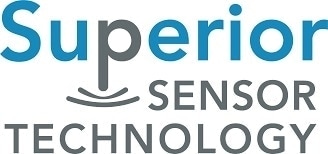Medical diagnostic equipment must be incredibly accurate to effectively diagnose patients. The difference between an effective and ineffective treatment can often relate back to the precision – or otherwise – of the diagnosis.

Image Credit: Superior Sensor Technology
The dosage or even type of medication a patient should take can change depending on one small difference in measurement. This can be true for many types of medical tests, including MRIs, temperature measurements, blood work and lung capacity.
Chronic lung disease is on the rise due to a range of factors like higher smoking prevalence, an aging population and increases in air pollution.
A larger portion of the world’s population is being affected by illnesses like chronic obstructive pulmonary disease (COPD) and asthma. A vital tool to manage and diagnose these illnesses, among others, is a spirometer which measures the lung capacity and volume under various conditions.
Differential pressure sensors are used within spirometers to accurately diagnose the lungs of a patient. When the patient inhales and exhales, the sensors measure airflow so that they can provide accurate data. The spirometry equipment re-zeroes the sensor to capture the next reading with each breath taken and released.
This data is then used by the doctors to diagnose the patient and create a treatment and management plan. However, it is possible for the spirometer to ‘drift’ from its zero position during the diagnostic cycle, which can last up to 10 seconds or more, leading to less accurate readings. For the best patient care, an accurate reading is essential.
Z-Track technology
With its groundbreaking NimbleSenseTM architecture, Superior Sensor Technology has combined signal path integration and intelligent algorithms with processing intelligence to create modular building blocks that are easily selectable and perfect for use supporting a wide array of applications.
The company has developed its proprietary Z-Track technology that virtually eliminates this zero drift to ensure the utmost accuracy in medical devices. Greater accuracy is therefore provided to devices like spirometers, which in turn result in a more accurate, more effective diagnosis and overall better treatment plans.

Figure 1. Z-Track Output Graph vs. Traditional Pressure Sensors. Image Credit: Superior Sensor Technology
Z-Track by Superior Sensor Technology virtually eliminates this trend of ‘zero errors’ to ensure the continued accuracy of spirometry readings within the industry. Z-Track maintains minimal zero-point deviation with results that stay consistent regardless of elapsed time, as can be seen in Figure 1. The net result is more accurate readings, leading to better diagnosis and treatment plans for various lung conditions.
The company’s differential pressure sensors provide highly accurate readings for all types of spirometry equipment which includes both handheld and desktop units. Superior Sensor also offers a position insensitive capability ideal for handheld devices. This ensures accurate readings regardless of how the spirometer is positioned or used, and healthcare providers can be certain that the device has virtually eliminated all zero errors.
Availability
Currently, Z-Track technology is available throughout the SP Series of differential pressure sensors, the SP110, SP160 and SP210.
About Superior Sensor Technology
Superior Sensor Technology is an innovative, high technology company revolutionizing the high performance, cost driven pressure sensor market by developing integrative, highly intelligent solutions for industrial, HVAC and medical applications.
Our proprietary pressure sensor technology with advanced programmable software features enables customers to develop higher performing, more reliable equipment.
Superior Sensor Technology was founded in October of 2016 with a mission to bring Application Specific Sensors into the industrial, medical and HVAC markets.
Sponsored Content Policy: News-Medical.net publishes articles and related content that may be derived from sources where we have existing commercial relationships, provided such content adds value to the core editorial ethos of News-Medical.Net which is to educate and inform site visitors interested in medical research, science, medical devices and treatments.